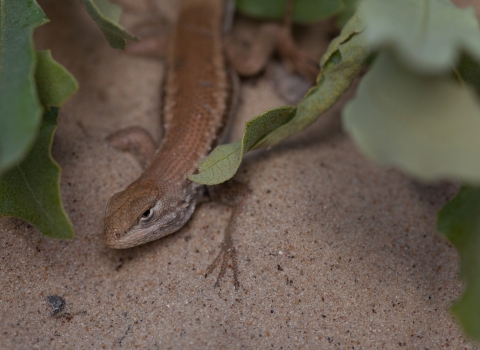DENVER – For over 111 years, the National Bison Range in Montana has supported ongoing conservation of America’s iconic national mammal: the American bison. Today, the U.S. Fish and Wildlife Service continues the national wildlife refuge national wildlife refuge
A national wildlife refuge is typically a contiguous area of land and water managed by the U.S. Fish and Wildlife Service for the conservation and, where appropriate, restoration of fish, wildlife and plant resources and their habitats for the benefit of present and future generations of Americans.
Learn more about national wildlife refuge ’s lasting conservation legacy for wildlife, visitors, surrounding communities and partners by releasing a final Record of Decision (ROD) for the refuge’s final Comprehensive Conservation Plan (CCP) and final Environmental Impact Statement (EIS). Together, these final documents will guide resource management and visitor recreation goals, including public use and access, at the refuge during the next 15 years.
“The degree of public interest and input provided throughout this process is an indication of how much people care about this unique national wildlife refuge,” said U.S. Fish and Wildlife Service Regional Director Noreen Walsh. “People near and far are passionate about the National Bison Range, including its wildlife and recreation opportunities. Today, we begin implementing a management plan that aims to benefit people, wildlife and natural habitats at this iconic western wildlife refuge for generations to come.”
A planning team of federal, tribal, state and local government agencies jointly developed the final CCP and final EIS. These cooperating agencies include: the Confederated Salish and Kootenai Tribes; Bureau of Indian Affairs; Montana Fish, Wildlife and Parks; Lake County; and Sanders County. Public comments also informed the final ROD, CCP and EIS, including written feedback and verbal input from public meetings in 2017, 2018 and 2019.
“I look forward to a new era at the National Bison Range, incorporating past successes and future opportunities to improve the refuge’s habitat for wildlife and visitors,” said National Bison Range Refuge Manager Amy Coffman. “By taking a holistic, ecosystem approach to conservation and working collaboratively with our partners, including the Confederated Salish and Kootenai Tribes, our intent is to make the refuge more sustainable, inclusive, and welcoming for all, now and into the future.”
The final ROD, CCP and EIS are forward-looking documents that will ground the refuge in measurable goals and objectives that benefit its associated wildlife and habitats. They address key management topics including refuge operations, grazing, visitor services and partnerships. These particular topics were the focus of most public comments received since 2017.
The final CCP emphasizes maintaining and/or enhancing ecological communities, recognizing that environmental conditions can change over time. Working with a variety of partners to incorporate their scientific, cultural, historical, local and interdisciplinary expertise, the Service aims to enhance conservation on a large scale through a variety of management actions, such as leveraging wildlife corridors to aid natural wildlife movement. Refuge staff will work to maintain memorable and meaningful visitor experiences by immersing visitors with nature, wildlife and the refuge’s rich history, while also addressing ongoing challenges, such as managing invasive species invasive species
An invasive species is any plant or animal that has spread or been introduced into a new area where they are, or could, cause harm to the environment, economy, or human, animal, or plant health. Their unwelcome presence can destroy ecosystems and cost millions of dollars.
Learn more about invasive species that threaten native plants and wildlife.
Elements that will remain a continued focus of future refuge management include: surplus bison management; prescribed fire management; partner agency collaboration; natural and cultural resources protection; collaboration with the Confederated Salish and Kootenai Tribes in applying traditional ecological knowledge; and developing educational and interpretative materials, such as exhibits and programs.
“As we continually reference this management plan to implement the shared goals, objectives, and vision developed with our partners and public input, we will adapt as needed to implement it in ways most feasible and beneficial,” said National Bison Range Refuge Manager Amy Coffman. “From here, we will move forward with partner and public support to more fully realize the shared vision outlined for these cherished public lands.”
All documents associated with the CCP process are available on the National Bison Range CCP Planning website. To learn more about the National Bison Range, visit: https://www.fws.gov/refuge/national_bison_range.
The National Bison Range was established by President Theodore Roosevelt in 1908 and lies entirely within the boundary of the Flathead Indian Reservation of the Confederated Salish and Kootenai Tribes. The 18,800-acre national wildlife refuge continues to play an important role in American bison conservation and recovery, supporting 250-300 bison on-site and providing bison to other public lands and federally-recognized tribes. The refuge also provides a place of respite for Rocky Mountain elk, mule deer, white-tailed deer, pronghorn, bighorn sheep and over 200 bird species. It is one of over 560 refuges in the National Wildlife Refuge System.
The mission of the U.S. Fish and Wildlife Service is working with others to conserve, protect, and enhance fish, wildlife, plants, and their habitats for the continuing benefit of the American people. For more information on our work and the people who make it happen in the West, or connect connect with us through any of these social media channels: Facebook, Twitter, Flickr, YouTube, and Instagram.



